Feb 15, 2016
The solution to football's concussion problem?
Since the introduction of polycarbonate shells in 1986, NFL helmets have remained nearly uniform in design despite the fact that the initial purpose of that helmet design was to prevent skull fractures, not brain injuries. Enter Seattle-based company VICIS and their Zero1 helmet, designed to absorb impact to prevent concussions.
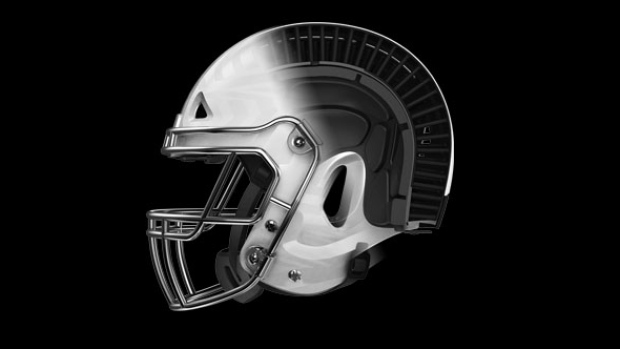
Despite the growing concussion problem facing the sport of football, one key piece of equipment has undergone almost no major change since the 1980s, until now.
Since the introduction of polycarbonate shells in 1986, NFL helmets have remained nearly uniform in design despite the fact that the initial purpose of that helmet design was to prevent skull fractures, not brain injuries.
Enter Seattle-based company VICIS and their Zero1 helmet. Unveiled in January, the helmet features a revolutionary design that absorbs impact to reduce brain trauma.
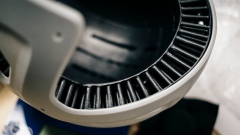 Using the science behind car bumpers, the outer shell of VICIS’ Zero1 is designed to collapse to absorb impact. Under that outer ‘Lode Shell,’ is the ‘Core Layer,’ a columnar structure designed to absorb impact, then re-form to re-shape the outer shell at a speed invisible to the naked eye.
Using the science behind car bumpers, the outer shell of VICIS’ Zero1 is designed to collapse to absorb impact. Under that outer ‘Lode Shell,’ is the ‘Core Layer,’ a columnar structure designed to absorb impact, then re-form to re-shape the outer shell at a speed invisible to the naked eye.
The interior layers, the ‘Arch Shell’ and ‘Form Liner,’ are made in different sizes to allow a specific fits to a player’s head for comfort and protection. The chin strap features four straps, as with several current helmets, but two connect inside the helmet in order to limit energy flow to a player’s jaw.
Some have touted the Zero1 as the “helmet which could save football,” but VICIS CEO Dave Marver sees the helmet as just one piece toward making football safer.
“We can’t save football alone,” VICIS CEO Dave Marver told TSN.ca. “Improving football safety is going to take better equipment, rule changes, better coaching – a whole basket of things. We’re just trying to do our part here, and we do feel like we can make a difference.”
Comfort and fit were key points for the company in order to create a helmet players would be willing to try. Professional football players are notoriously particular about the look and feel of their equipment, sometimes at the expense of safety.
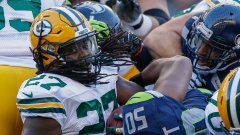 Green Bay Packers running back Eddie Lacy, for example, switched to Riddell’s SpeedFlex helmet, also designed to reduce concussions with added flexibility in parts of the helmet, ahead of the 2014 season. After suffering a concussion in his first regular season game wearing the SpeedFlex, Lacey switched back to the more traditional helmet he had worn in the past. Lacy suffered one concussion in the old helmet as rookie, but has not suffered one in the two years since switching back.
Green Bay Packers running back Eddie Lacy, for example, switched to Riddell’s SpeedFlex helmet, also designed to reduce concussions with added flexibility in parts of the helmet, ahead of the 2014 season. After suffering a concussion in his first regular season game wearing the SpeedFlex, Lacey switched back to the more traditional helmet he had worn in the past. Lacy suffered one concussion in the old helmet as rookie, but has not suffered one in the two years since switching back.
For this reason, VICIS had to create a helmet that looked and felt like a typical helmet, despite the major differences in design.
“(Players) are creatures of habit and that was one of the design considerations,” Marver explained. “A larger helmet, to a certain extent, is a safer helmet. But we wanted to introduce a helmet that players would love to wear, that had great styling. So our design requirement would be that it would be no bigger than today’s leading helmet and no heavier than today’s leading helmet. We had to work within those constraints to come up with the safest and most effective design.”
To help with the design, the company reached out to as many as 50 NFL and NCAA teams and programs to receive feedback on the necessary look and feel.
 The science behind the helmet is meant to reduce G-forces and impact forces which reach the brains of players. While there is no exact average for the reduction the Zero1 provides, VICIS markets the reduction as “significant.” The helmet, while yet to be worn or tested on a human, has been tested in situations that mimic blows taken on a football field.
The science behind the helmet is meant to reduce G-forces and impact forces which reach the brains of players. While there is no exact average for the reduction the Zero1 provides, VICIS markets the reduction as “significant.” The helmet, while yet to be worn or tested on a human, has been tested in situations that mimic blows taken on a football field.
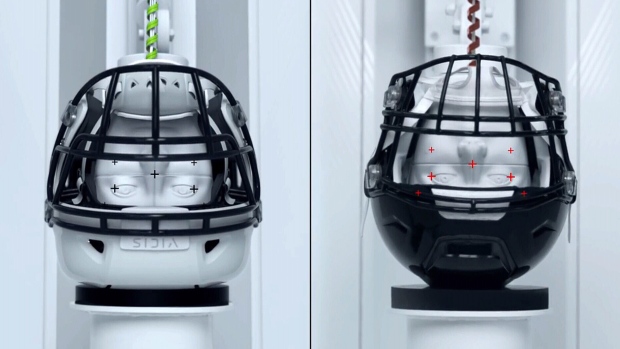
“Our testing is showing significant reduction in acceleration and in impact forces,” said Marver. “It depends on the velocities and the locations and it’s variable depending on those things. I don’t want to give just one number. I’d rather say significant.
“When we actually launch the helmet, rather than just unveil it, we’ll have third-party data from the leading labs throughout North America, including the one in Ottawa, Biokinetics, and Virginia Tech and others. We are a group of engineers and scientists. We are going to go to market with independent third-party data, and that will be something that these teams can depend on to help make their decision wisely.”
The launch of the helmet is set for this spring, with a limited number of NFL and collegiate teams receiving the product through staff members – equipment mangers and athletic trainers – who will select players they believe can benefit from wearing the helmet in games moving forward. The helmets will be available for NFL and NCAA players to wear for the 2016 season, with the helmet also being made available to CFL players at that time.
The debut helmet is priced at $1,500 (U.S.), roughly four to five times higher than the price of current helmets marketed to NFL players – and the public.
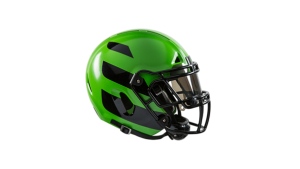 “The pricing of today’s helmets (on the market) doesn’t make a lot sense,” said Marver. “Shoulder pads, for example, often cost more than helmets – so we’re paying more to protect shoulders than we are to protect heads. This issue is not to make a less expensive helmet, but to make a better helmet.”
“The pricing of today’s helmets (on the market) doesn’t make a lot sense,” said Marver. “Shoulder pads, for example, often cost more than helmets – so we’re paying more to protect shoulders than we are to protect heads. This issue is not to make a less expensive helmet, but to make a better helmet.”
The Zero1 has a demographic of professional and collegiate athletes, but the company anticipates a broader product launch for high school and youth players will come in 2017 with a helmet expected to come at a lower price than the adult model.
In December of 2015, VICIS, via their academic partner, the University of Washington, was named one of three final winners of the NFL’s Head Health Challenge II, dedicated to finding “innovative approaches for preventing and identifying brain injuries.” It was the only helmet to be among the seven finalists of over 500 applicants.
Marver called being named a winner and securing a $250,000 grant, “extremely validating.”

January’s unveiling of the Zero1, done via the video above, came more than two years after co-founders Dr. Samuel Browd, Marver and Dr. Per Reinhall first began brainstorming the project, in August 2013.
“The three of us got together because between us, we had a good team,” Marver explained. “With Sam Browd, you have the clinical side as a pediatric surgeon. With Per you have the engineering expertise —he’s chair of mechanical engineering at the University of Washington, and then I bring the business building and commercialization expertise.”
The three then continued to grow the idea at the University of Washington, before creating VICIS to bring the helmet to life.
Moving forward, VICIS intends to continue to improve their product and eventually apply the design concept to hockey and lacrosse helmets.
NFL Concussion data
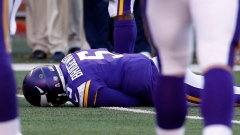 According to league data, the number of reported concussions spiked 58 per cent in 2015 from the previous year, to a record-high (since the league began releasing information in 2012) 182.
According to league data, the number of reported concussions spiked 58 per cent in 2015 from the previous year, to a record-high (since the league began releasing information in 2012) 182.
In the past month alone, chronic traumatic encephalopathy, or CTE, has been found in the brains of two former players, Ken Stabler and Tyler Sash. Boston University, which examines the brains of ex-NFL players who donate them to science, has found CTE in a player at every NFL position except kicker.
In search of a solution, the NFL has changed rules to avoid players targeting the heads of opponents, implemented concussion protocols and committed millions to concussion research and prevention studies and products, including the Head Health Challenge series.


